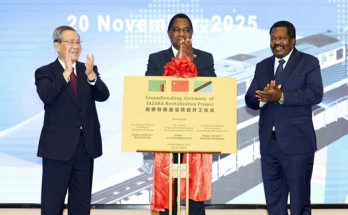 Eskom’s Interim Group Chief Executive Johnny Dladla today released the company’s 2016/17 financial results saying that the power utility was on a firm operational and financial footing.
Eskom’s Interim Group Chief Executive Johnny Dladla today released the company’s 2016/17 financial results saying that the power utility was on a firm operational and financial footing.
“Whereas security of power supply was the key concern nearly two years ago, the focus has now shifted to managing surplus capacity,” said Dladla.
He said Eskom had adopted an aggressive sales volume growth to support economic growth by encouraging an annual growth of 2.1% in local demand and 8% in export sales over the next 5 years.
“Eskom is ideally positioned to support the economic recovery of South Africa and enable industrial growth across Southern Africa. We will build on the momentum of our performance and efficiency improvements over the recent years and become a more customer-centric organisation that partners with key sectors to increase industrial activity, electricity consumption and job creation,” he said.
Reflecting on the operational and financial performance of the company in the year under review, Dladla said Eskom’s turnaround plan was premised on three key focal areas, namely, improving generation performance; ensuring financial sustainability; and completing the new build programme.
“To this end, generation plant availability increased from 71.1% to 77.3% due to Eskom’s strict adherence to its plant maintenance plans. As a result of this increased availability and the additional new generating capacity added from Medupi, Ingula and Kusile, the reliance on open-cycle gas turbines (diesel generators) has reduced considerably. Eskom has not implemented load shedding for the past 23 months, and the plan is to
continue implementing appropriate levels of planned maintenance to ensure long-term plant reliability,” he said
In terms of Eskom’s existing Generation Sustainability Strategy, its aim is to achieve 80% plant availability, 10% planned maintenance and 10% unplanned maintenance by 2020.
Eskom’s Chief Financial Officer, Anoj Singh, said the company’s earnings before interest, taxes, depreciation and amortisation (EBITDA), which is a measure of a company’s operating performance, surged 14.4% to R37.5 billion in the year-ended 31 March 2017,up from R32.8 billion in same period last year.
Revenue rose 8% to R177 billion (2016:R164.2 billion), driven largely by a 12.1% increase in export sales and a 9.4% tariff
increase that was granted by the energy regular last year. In order to grow export sales, Singh said Eskom has concluded new export sale
agreements with a number of regional trading partners, ranging from 50MW to 200MW.
He said the company’s cost-cutting measures were also bearing fruit, with a saving of R20.2 billion realised in the year under review, up from R17 billion achieved previously. The savings were achieved from coal operational expenditure and other operating costs. Primary energy costs were reduced by 2.3% to R82.8 billion compared to an average increase of 13% over the last five financial years.
Eskom’s own generation costs, including environmental levy, of R60.1 billion (2016: R65.7 billion) generated 215 358GWh and reflects a decrease of 8.5% compared to the previous year. Coal purchase costs per tonne increase were contained to 3.5%, which was well below inflation of 6%.



